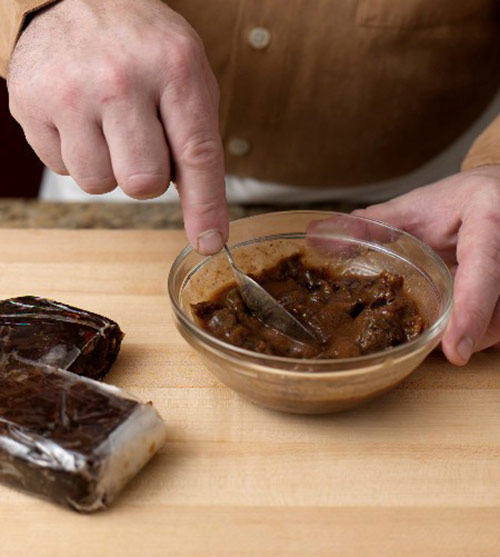There is a Buddhist parable about the tamarind tree in which its seeds are said to be symbols of faithfulness and forbearance. While the story doesn’t say much about the tamarind as food, it does illuminate a little bit about the history of this venerable plant and its incredible sweet and sour fruit. Originating in Africa, the tamarind tree spread all over the world and was widely known in Buddha’s time. In the early 1600s, the tree and its delicious fruit were introduced to the Western Hemisphere, specifically, Mexico and the Caribbean. This widespread importation and trade of the tamarind over so many years is a testament to both its usefulness and its possibilities for today’s chefs.
Making Inroads in North America
Tamarind is very popular in the cuisines of the tropics but is still relatively underutilized in the United States. However, like many products that have assimilated themselves into the dining culture of North America, tamarind has gained in use and popularity thanks to immigrants from regions where the fruit is used everyday. Tamarind comes in many forms and is used differently by different cultures. In Mexico, it is a popular additive in beverages and in sweet and sour candies. In Southeast Asia, where it is used in sauces, soups, and noodle dishes, tamarind is called by many names, including “asam,” which is a Malay word that translates to “sour.” And you may be surprised to discover where tamarind can be found in the U.S.—it is one of the main flavorings of the popular Lea & Perrins Worcestershire sauce.
From Pod to Pulp
The fruit of the tamarind tree is a three- to eight-inch long brown, irregularly curved pod. Borne in abundance along the new branches, the pods fill out somewhat as they mature, and the juicy, acidulous pulp turns brown. When fully ripe, the shells are brittle and easily broken. The pulp dehydrates to a sticky paste enclosed by a few coarse strands of fiber. The pods may contain from one to 12 large, flat, glossy brown seeds embedded in the brown, edible pulp. The pulp has a pleasing sweet/sour flavor and is high in both acid and sugar. It is also rich in vitamin B and high in calcium. There are wide differences in fruit size and flavor depending upon the terroir of the trees. Indian varieties have longer pods with six to 12 seeds, while the West Indian fruits have shorter pods containing only three to six seeds. Most tamarinds in the Americas are of the shorter, more acidic variety.
Tamarind fruits mature in late spring to early summer, and they may be left on the tree for as long as six months after maturity. Fruits destined for immediate processing are often harvested by pulling the pod away from the stalk. Mature trees are capable of producing 350 pounds of fruit a year.
Sweet, Sour, and Versatile
 The tamarind’s almost-perfect sweet and sour balance makes it unusual in the plant world. The fruit may be eaten fresh, but it is most commonly used with sugar and water in the American tropics to prepare a cooling drink. Tamarind pulp is used to flavor preserves and chutney, make meat sauces, and pickle fish. Candy can be made by mixing the pulp with dry sugar and molding it into desired shapes. Southeast Asians often use the tamarind in combination with chiles to make a paste for basting fish and chicken that is to be grilled.
The tamarind’s almost-perfect sweet and sour balance makes it unusual in the plant world. The fruit may be eaten fresh, but it is most commonly used with sugar and water in the American tropics to prepare a cooling drink. Tamarind pulp is used to flavor preserves and chutney, make meat sauces, and pickle fish. Candy can be made by mixing the pulp with dry sugar and molding it into desired shapes. Southeast Asians often use the tamarind in combination with chiles to make a paste for basting fish and chicken that is to be grilled.
While the fresh fruit may be challenging to find, tamarind paste can be purchased online or at specialty and regional markets.


